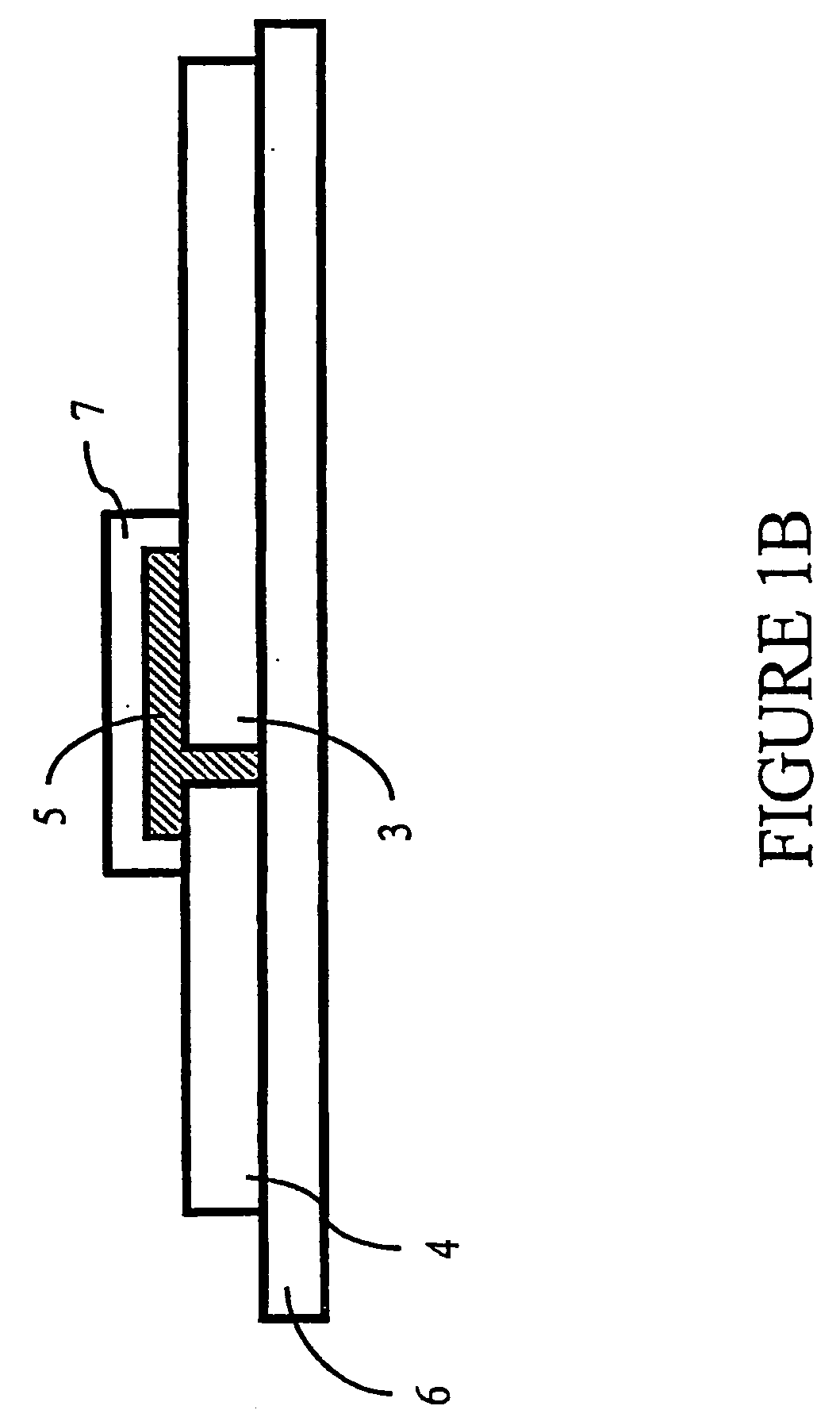Electrochemical device
a technology of electrochemical devices and chips, applied in the direction of instruments, antenna supports/mountings, antennas, etc., can solve the problems of limiting the ability to mass-produce the tags to lower prices, difficult and expensive (>0.50 usd) manufacturing, and the chips used in prior art devices suffer from a lack of environmental friendliness, processability and economic production possibilities
- Summary
- Abstract
- Description
- Claims
- Application Information
AI Technical Summary
Benefits of technology
Problems solved by technology
Method used
Image
Examples
Embodiment Construction
Definitions
[0044]Bi-stable electrochemical transistor: an electrochemical transistor device in which the transistor channel retains its redox state (and hence its conductivity characteristics) when the gate voltage is removed.
[0045]Dynamic electrochemical transistor: an electrochemical transistor device in which the transistor channel spontaneously returns to its initial redox state (and hence to its initial conductivity characteristics) when the gate voltage is removed.
[0046]Source contact: An electrical contact that provides charge carriers to a transistor channel. According to the present invention, the source contact is connected to one of the pads of a capacitively coupled device (i.e. the first pad of the antenna member).
[0047]Drain contact: An electrical contact that accepts charge carriers from a transistor channel. According to the present invention, the drain contact is connected to one of the plates of an capacitive coupled device or coupled to ground (i.e. the second pad...
PUM
| Property | Measurement | Unit |
|---|---|---|
| thickness | aaaaa | aaaaa |
| thickness | aaaaa | aaaaa |
| width | aaaaa | aaaaa |
Abstract
Description
Claims
Application Information
 Login to View More
Login to View More - R&D
- Intellectual Property
- Life Sciences
- Materials
- Tech Scout
- Unparalleled Data Quality
- Higher Quality Content
- 60% Fewer Hallucinations
Browse by: Latest US Patents, China's latest patents, Technical Efficacy Thesaurus, Application Domain, Technology Topic, Popular Technical Reports.
© 2025 PatSnap. All rights reserved.Legal|Privacy policy|Modern Slavery Act Transparency Statement|Sitemap|About US| Contact US: help@patsnap.com



